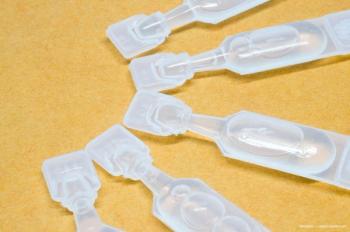
Alternative topical ocular antiseptic lowers bacterial load with less pain
Reviewed by Thomas W. Hejkal, MD, PhD
Because many people are very sensitive to povidone-iodine 5% (Betadine; Alcon), Thomas Hejkal, MD, PhD, and colleagues set out to identify an alternative ocular antiseptic with the potential to cause fewer ocular problems for their patients that is also as effective at eradicating surface bacteria.
Hejkal is a former processor and chairman of the Department of Ophthalmology and Visual Sciences at the University of Nebraska Medical Center and is in private practice at Eye Consultants, PC, in Omaha, Nebraska.
Investigators compared the antimicrobial effects of hypochlorous acid 0.01% (Avenova: NovaBay Pharmaceuticals, Inc) with those of povidone-iodine, the standard of care for preoperative bacterial control on the ocular surface.
A total of 40 participants (80 eyes) were included in this comparative study.1 Swabs were obtained from both eyes of each participant, and the results served as the baseline values.
One eye of each patient was then treated with hypochlorous acid and the other with povidone-iodine. After the eyes were exposed to the antiseptic agents for 1 minute, the investigators took swabs of the inferior conjunctiva and posterior lower eyelid margin from both eyes and then plated the samples onto blood agar plates.
Hejkal explained that the eyes treated with povidone-iodine were rinsed with sterile saline and then a second swab was taken. The numbers of colony-forming units (CFUs) were recorded after 2 days.
In addition, patients were asked to rate the level of irritation that they experienced associated with each antiseptic.
Comparative results
The study authors showed that both antiseptic agents achieved a significant reduction in CFUs compared with baseline (P < .001 for hypochlorous acid; P = .002 for povidone-iodine). The mean respective reductions in the log CFUs ± the 95% CI were 0.850 ± 0.387 or greater and 0.749 ± 0.385 or greater.1
“These reductions were equivalent to a mean reduction of 86% or greater (95% CI, 66%-94%) for hypochlorous acid and 82% or greater (95% CI, 57%-93%) for povidone-iodine,” Hejkal explained.
The study confirmed what is already common knowledge for doctors who do intraocular injections—that povidone-iodine causes irritation in many patients. Substantial irritation was reported in 31 of the 40 participants due to the instillation of povidone-iodine; however, no individuals reported any irritation resulting from use of topical hypochlorous acid.
Another interesting finding: The CFUs increased in 17 of the eyes treated with povidone-iodine after they were rinsed with saline.1
“Both antiseptic agents were effective in reducing the ocular bacterial load. However, hypochlorous acid was not irritating to the eye,” the investigators concluded.1 “Use of the saline rinse after topical povidone-iodine may increase the bacterial counts in some individuals.”
Hejkal described his experience with testing the 2 formulations in his own eyes. He found that povidone-iodineinstillation was sufficiently irritating to interfere with his work for the remainder of the day. In contrast, the hypochlorous acid actually felt “somewhat soothing in the eye,” he said. Hejkal reported using hypochlorous acid as an alternative to povidone-iodine for several years.
Thomas W. Hejkal, MD, PhD
Hejkal has no financial disclosures related to this content.
Reference
Hejkal TW, Maloley LA, Kaddoura L. Hypochlorous acid 0.01% vs povidone-iodine 5% for ocular antisepsis. J Vitreoretin Dis. 2022;6(2):132-137. doi:10.1177/24741264211013622
Newsletter
Don’t miss out—get Ophthalmology Times updates on the latest clinical advancements and expert interviews, straight to your inbox.



















































.png)


